
- •Computer science english
- •Unit 1. Computer millenium
- •2. Work in groups of three or four. What aspects have not been mentioned by anybody before reading? Why?
- •3. Match the passages on the left with the pictures on the right.
- •4. Read Text 2 and match the passages with the most suitable heading.
- •5. Answer the questions on the text.
- •6. Choose the best way to complete each sentence.
- •7. Read Text 3 and decide if the following statements are true (t) or false (f):
- •Text 3. Computers in the modern world
- •8. Complete the sentences on the text:
- •Vocabulary
- •2. Look Text 2 through again and match the words on the left with their definitions on the right.
- •3. Form with the given words as many different words as possible and translate them into Russian.
- •4. Complete the following sentences with the words from ex. 2.
- •5. Make up 5 sentences using the vocabulary from ex. 1. Ask your partner to translate them into Russian.
- •6. Translate the following sentences using the highlighted words and expressions from Text 3.
- •2. Role-play “An expert and a dummy”.
- •Unit 2. Computer architecture
- •3. Complete the sentences on the text:
- •4. Choose the best answer.
- •5. Read Part II of the text which tells you about the other useful components of the computer. Can you suppose what they are? Make the list and compare after reading. Part II
- •6. Read the text again and match the gaps (1-6) with the sentences (a-g) below. There is one sentence that you don’t need.
- •7. Are the statements true (t) or false (f) according to the text?
- •8. Retell the text about what a computer is using the expressions in italics from Part I and II:
- •Vocabulary
- •1. Complete the sentences using the words from the box.
- •2. Match the words and word expressions from Part I with their Russian equivalents.
- •3. Arrange the words from a to the words from b in pairs of synonyms.
- •4. Make up 5 sentences with the words from ex. 2 and 3. Ask your partner to translate into Russian.
- •5. Study these examples of prepositions of place, translate them into Russian.
- •6. Complete the sentences using the prepositions from Ex. 2.
- •8. Look at the words in ex.7 again. How many different words can you form with each one? Using a dictionary write them down and translate into Russan.
- •9. Translate into English using the active vocabulary from Part I.
- •1. Work in pairs. Find out as much as you can about your partner's computer by asking questions about the features in the table and complete it. Whose computer is more powerful?
- •2. Role-play “At an it shop”.
- •Unit 3. Programming languages
- •Text 1. Programming languages
- •3. Answer the questions on the text:
- •7. Decide if these sentences are true (t) or false (f) supporting your answers with information from the text:
- •3. Study the verbs from Text 2. Form nouns from them, translate into Russian:
- •4. Translate the sentences from Russian into English using the verbs and the nouns from ex. 3:
- •2. Role-play “First-time programmers”.
- •Unit 4. Software
- •2. Find the answers to these questions in the following text.
- •Text 2. Design patterns
- •Uses of Design Patterns
- •Vocabulary
- •Text 4.
- •4. Find in Text 4 the English equivalents of the following combinations:
- •1. Read the following quotes for software engineers:
- •2. Study these versions of Office Suite and decide which version provides the best value for the following users.
- •Unit 5. Graphics and multimedia
- •1. Look at the chart and give the definition of Multimedia.
- •1. Read Text 1 and answer the questions:
- •Text 1. Intelligent multimedia computer systems
- •2. Are the statements true (t) or false (f) according to the text?
- •7. Answer the questions on the text:
- •Vocabulary
- •1. Study the words and word combinations from Text 1 and give Russian equivalents:
- •2. Complete the following sentences with the words from ex 1.
- •3. Study the verbs from Text 1and with the help of a dictionary say which of them are international. Using a dictionary write down all possible words and translate them into Russian:
- •4. Using the verbs from ex. 3 say what multimedia computer systems can do. Write the sentences down.
- •5. Look at the components of a multimedia system and then say which category they belong to:
- •5. Match the words and word combinations with their Russian equivalents:
- •6. Translate the following sentences using the words and word combinations from ex. 5.
- •1. Work in pairs.
- •3. Project Work.
- •Unit 6. World wide web: internet, networks
- •1. Work in pairs and answer the questions. Do new developments in information technology affect your life? Which of these phrases describes you?
- •2. Now take the quiz. Ask your partner about the answers to the quiz and compare them.
- •Is your answer still the same afterwards? Who is more addicted to the Internet, you or your partner?
- •1. Put these events in the correct chronological order then read the text and check:
- •2. Read the text and answer the following questions:
- •Text. The rise of the world wide web
- •3. Give the heading to each passage of the text and use them to retell the text.
- •Vocabulary
- •1. Match the words with their definitions:
- •2. Complete the sentences with the words from ex. 1:
- •3. Rearrange the words to get the correct sentences using text 1:
- •4. Translate the sentences from Russian into English. Take the words in italics from the text:
- •1. Work in pairs. How much do you know about the history of networking? Can you match these events 1-4 to the dates a-d?
- •Is it Gottfrid Warg’s first charge? Do you suppose he will be punished?
- •3. Complete the sentences on the text:
- •4. Read Text 2 and find out what a ‘virus’ is: Text 2
- •5. Work in pairs and interview your partner asking these questions:
- •6. Read Text 3 and find out what is recommended to protect a computer: Text 3
- •Vocabulary
- •1. Look at the words from Text 1. How many different words can you form with each one? Using a dictionary write down all possible words and translate them into Russian:
- •2. Complete the following sentences with the original words from ex. 1 (including the word from the example):
- •3. Match the words and word combinations from Texts 2 and 3 with their Russian equivalents:
- •4. Translate the sentences from Russian into English:
- •5. Using the words from ex. 3 say what can be done to protect a computer from hackers. Write the sentences down.
- •6. Study these phrasal verbs and give Russian equivalents:
- •7. Now complete the gaps with the appropriate phrasal verbs in the correct form. In some cases, more than one answer is possible:
- •8. Replace the verbs in italics with a phrasal verb of a similar meaning. Use some of the verbs from ex. 6.
- •Unit 8. People in computing
- •1. Work in pairs. Take the computing quiz.
- •1. Answer the questions as a group:
- •2. Read the text following the instructions:
- •Text 1. Top 6 most important people in the history of computers
- •Vocabulary
- •1. Discuss the following questions:
- •2. Match the professions with their definitions:
- •3. Complete the sentences with an adjective from the box.
- •4. Study the list of technical qualifications and professional skills which are necessary for it-specialists:
- •1. Work in pairs. Which of the jobs in Exercise 2 would you most like to have? Which would you least like to have? Tell your partner why.
- •2. Study these job advertisements from the famous American job site www.Monsterjob.Com and match the requirements to the jobs which follow. A) Computer system engineer / network technician
- •3. Role-play «a Job Interview».
- •2. Read the statements and decide if they are true (t) or false (f).
- •5. Answer the questions.
- •6. Retell the text in a snowball form using some of the following expressions:
- •Vocabulary
- •2. Match the words and phrases from Text 1 about the leading it corporations with their Russian equivalents.
- •3. Translate into English using the vocabulary from ex. 1, 2.
- •4. Match the highlighted words from Text 2 with the definitions and synonyms below.
- •1. Do you know anything about the things in the photos? Read the descriptions and match them with the following new and noteworthy inventions:
- •3. Look at the pictures and name the following devices. What do you know about them?
- •4. Read Text 2 and answer the following questions:
- •Text 2. Licence to chill
- •5. Look through text 2 once again and say whether the following sentences are true (t) or false (f):
- •6. Read text 3 and name the function of electronic nose. Text 3. Electronic nose
- •7. Look at the text once again and answer the questions:
- •8. Read text 4 and say what robotically-assisted surgery was developed for. Text 4. Robotic surgery
- •9. Complete the sentences using the information from text 4:
- •10. Read text 5 and answer the following questions:
- •Text 5. Speech recognition
- •11. Match the following sentences with the inventions you have read:
- •Vocabulary
- •1. Match English phrases with their Russian equivalents:
- •2. Find adequate English translation of the following words and phrases:
- •3. Insert the prepositions (into, on, to, without, past, from, with, for, past, in):
- •4. Translate the following sentences from Russian into English using the words and expressions from ex. 1 and 2:
- •5. Work in pairs. Look at these predictions and say which of them are likely to come true and when. Add some of your own and compare them with other students.
- •2. Write an abstract of the text in 3-4 sentences. Text 2 can humans remain in control of computers?
- •1. Read the text and say what these numbers refer to:
- •3. Retell the text in 10 sentences.
- •1. Read the text and answer the following questions:
- •2. What are the most effective ways of prevention computer crimes in banking from your point of view?
- •2. Work in groups of three and find out if anybody has such a device. If yes, let him tell about (dis)advantages of it. If nobody has it, ask yourselves, what would you do, if you had it?
- •Text 6 best free antivirus: windows defender vs. Avast
- •1. Read the text and decide if the statements are true (t) or false (f).
- •3. Discuss in the group if anybody is ready to work as an it specialist for free but get some experience in this sphere. Give your reasons for pros and cons. Text 8 windows 8: a new look
- •1. Read the text and answer the following questions:
- •2. Share your views and opinions on Windows8 with your partner. What advantages does it give for the users? Text 9 safeguard your data
- •1. Read the text and answer the following questions:
- •2. Work in pairs. Find out how often and how your partner backups the data. Would he use the services of Carbonite? Report the results to the class. Text 10 steganography revealed
- •1. Read the text and match the paragraphs with their headings. Arrange the paragraphs in the correct order.
- •2. Work in pairs and discuss what spheres of life stenography is used in. Would you like to learn to use it? Why?
- •Computer science english
- •400005, Г. Волгоград, пр. Ленина, 28, корп. 1.
- •400005, Г. Волгоград, пр. Ленина, 28, корп. 7.
5. Make up 5 sentences using the vocabulary from ex. 1. Ask your partner to translate them into Russian.
6. Translate the following sentences using the highlighted words and expressions from Text 3.
1) Большинство людей стали слишком зависимыми от компьютеров и проводят много времени за ними. 2) Хакеры используют свои знания неправильным образом, взламывая не только сайты простых граждан, но и правительственные и банковские системы. 3) Общение онлайн часто заменяет живое общение, что не дает возможности узнать человека лучше.
4) Компьтер банкомата предоставит доступ к твоему банковскому счету, если пин-код введен правильно. 5) Многие образовательные учреждения используют устаревшие компьютеры по причине недостаточного финансирования. 6) В середине 20-го века компьютеры были ненадежными и имели много недостатков, например, огромный размер. 7) Компьютеры внутри одной фирмы образуют сеть и используют одни и те же данные.
8) Короче говоря, имея компьютер, человек не ограничен в своих возможностях.
SPEAKING
1. Work in small groups. Think about the activities people perform or want to perform using a computer (email, online shopping, etc.). Think about all types of computers that are necessary for you to complete your day-to-day activities. Use the following prompts of possible options: at streets, at shops, at the cinema, at hospital, on TV, on the Internet, at the airport, at the railway station, at the police department and etc. Be ready to report your results to the rest of the group.
2. Role-play “An expert and a dummy”.
Work in pairs. Student A is a computer expert who knows everything and even more. Student B is A’s friend or relative who wants to learn how to use a computer. An expert tries to explain common rules of computer use; a dummy doesn’t understand how this weird machine can function in different spheres of life. The argument starts but in the end everything is ok. Be ready to act your dialog out. You are welcome to use the active vocabulary from unit 1 and such phrases as:
|
AN EXPERT |
A DUMMY |
|
First of all you should… Of course, it’s easy/elementary Can you be so stubborn/lazy/such a doubting Thomas that you … Even children can… |
Really? How come? Indeed? That’s impossible/outrageous/unthinkable Are you kidding? I’m too old/well-bred/patient/generous to do it. Let’s start from the beginning… |
Unit 2. Computer architecture
COMPUTER TALKING
1. Work in pairs and speak on the questions.
1) Have you got a computer at home? What kind is it? 2) How often do you use it? What do you use it for? 3) Do your parents/grandparents try to use computers? If yes, did you teach them? If no, why can’t you show them how to do it?
4) Do you take your computer with you (to university/to friends/ to malls)? Why?
2. Name these different types of computers. Label the pictures with the words given in the box.
|
tablet PC PDA mainframe laptop desktop PC supercomputer |
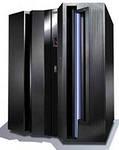 a)
a)
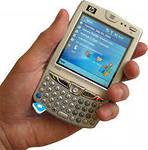 b)
b)
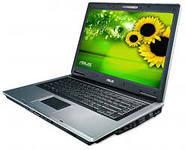 c)
c)
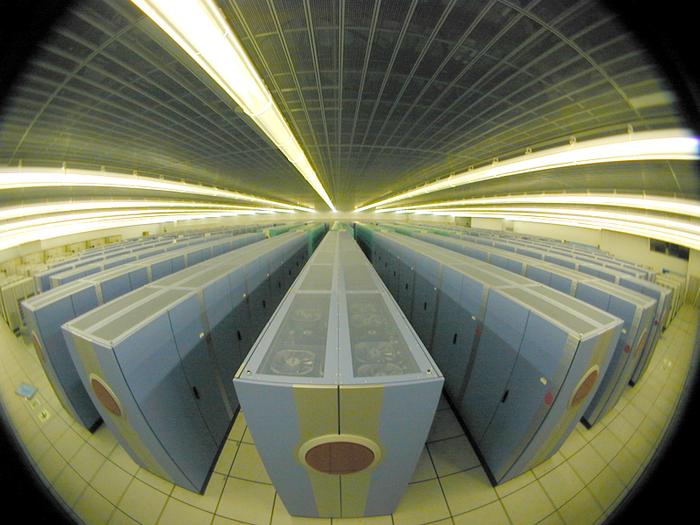 d)
d)
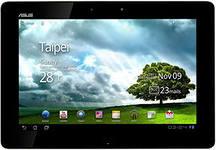 e)
e)
 f)
f)
3. Work in groups of three and discuss the following questions:
1) What spheres of life are the computers from ex. 2 used in? 2) What type do you use? 3) Which type is the most powerful/popular/power-consuming/energy-efficient/the lightest?
4. Work in pairs. Think of all important components a computer consists of. Make the list of them. Compare your ideas with others.
READING
1. Read the first part of the text about what computer is and compare if you have mentioned every important detail in ex. 4.
2. Answer the questions on the text.
1) What is a computer? What kind of such machines are there? Which is the most popular and useful? 2) What’s the difference between hardware and software? Can a computer function without any of these components? 3) What does the central processing unit do? 4) What is RAM? What function does it have? 5) Read-only memory (ROM) loses its components when power is removed, doesn’t it? 6) Does cashe constantly hold data or program instructions to improve overall computer performance? 7) What is memory capacity measured in? 8) What are all of the others internal components connect to? 9) How can all other chips attached to the motherboard access the CPU? 10) What kinds of cards make the use of a computer so exciting?
Part I
To begin with, computer is a programmable electronic machine that processes data and performs calculations and other symbol manipulation tasks. It can take information from a person through the keyboard or mouse, from a device like CD or from the network through a modem.
There are three types of machines: the digital computer, which manipulates information coded as binary numbers; the analog computer, which works with continuously varying quantities; and the hybrid computer, which has characteristics of both analog and digital computers.
The mechanical, electrical, and electronic components of a computer system are called hardware. A collection of programs and procedures for making a computer perform a specific task is called software. Software is created by programmers and is either distributed on a suitable medium, such as a floppy disc, or built into the computer in the form of firmware. Examples of software include operating system, compilers, and application programs.
The main component of a computer is the central processing unit (CPU). It includes the arithmetic and logic unit that carries out all calculations and logical operations, and control unit, which helps to run information around the system, since it decodes, synchronizes, and executes program instruction.
The next important component of a computer is called «random access memory» or RAM. The memory is considered «random access» because the memory locations can be accessed directly rather than requiring sequential access. It means that the data can be selected without having to skip over earlier data first. Virtual memory-space on a hard disc used to temporarily store data and swap it in and out of RAM as needed. RAM is the short-term memory of the computer. It is volatile, which means that any information stored in it will be lost if power goes out.
A permanent type of memory storage used by the computer for important data that does not change is called read-only memory (ROM). It does not lose its components when power is removed. ROM contains programs that are critical to the opera of the computer, for example, the instructions necessary to boot the computer when it is turned on.
BIOS (basic input/output system) is a type of ROM that used by the computer to establish basic communication when computer is turned on.
Cache is a special memory subsystem within a computer that temporarily holds data or program instructions to improve overall computer performance.
Hard disc (sometimes called Winchester) is large-capacity permanent storage used to hold information such as programs and documents. Needless to say, that memory is one of the most important components of every computer. The larger the memory is the more possibilities are available and can be realized. Memory capacity (computer memory size) is measured in bytes, kilobytes, megabytes, or gigabytes.
No doubt, the computer is a very complicated compound device, but nevertheless each more or less experienced user who wants to acquire a computer is always interested (besides the volume and rate of its memories) in parameters of its components, such as motherboard and video board or video adapter. Of course these parameters must depend on the purposes which his computer will be targeted to.
Motherboard is the main circuit board of the computer that all of the others internal components connect to. Typically, the motherboard contains the CPU, BIOS, memory, mass storage interfaces, serial and parallel ports expansion slots, and all the controllers required to control standard peripheral devices, such as the display screen, keyboard, and disc drive.
Video board is located on an expansion board and inserted into a slot in the computer to provide it with the ability to display a video image. The parameters of this device are very important for the multimedia purposes. Sound card is used by the computer to record and play audio by converting analog sound into digital information and vice versa. Graphics card translates image data from the computer into a format that can be displayed by the monitor.
